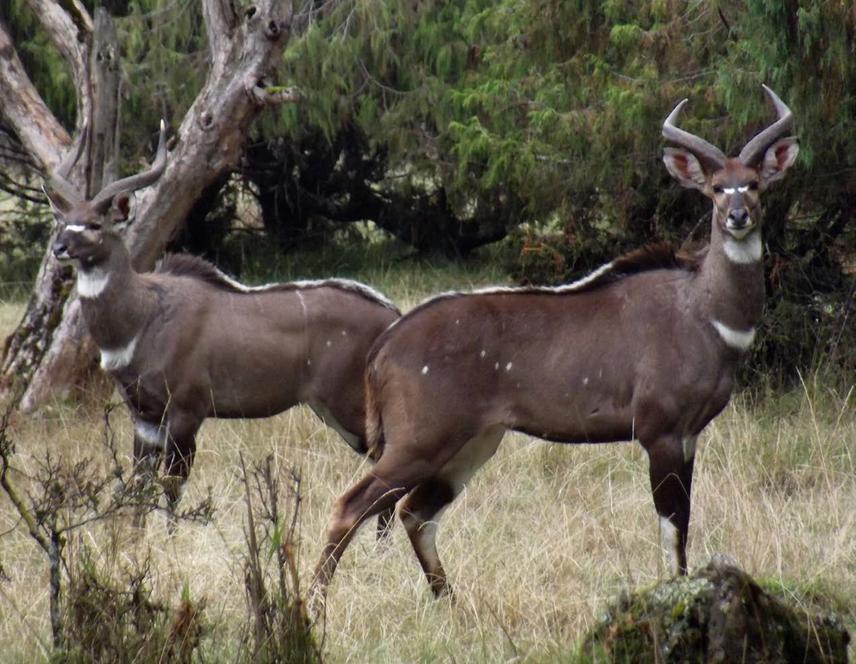Bethlehem Abebe Astella
This research project examines the implementation processes and short-term social and environmental outcomes of a community-based trophy hunting program in the Bale Mountains, Ethiopia. The trophy hunting program involves sharing revenues from hunting fees in return for desired conservation behavior and devolution of decision-making power to organized community user groups. This research will involve mixed social science methods to measure the perceived equitability of the benefits from the conservation program to different groups within six communities around Bale Mountains National Park (BMNP) and how this is affecting the communities’ adoption of desired conservation attitudes and behavior.

The Bale Mountains region, home of the Bale Mountains National Park (BMNP) is faced increasing conservation challenges including contested land use and resource ownership rights, human settlement in and around protected areas, and increasing population pressure and livelihood demands. In the face of mounting human pressure on natural resources, there is an increasing push towards people-centered conservation approaches that simultaneously meet conservation and livelihood priorities. One new community-based conservation effort underway is the creation of community-managed trophy hunting areas (CHAs). The CHA program employs two main mechanisms to link conservation goals with local community’s well-being. One is direct payments from conservation using hunting fees in return for desired conservation behavior. The second mechanism involves devolution of power and decision-making processes through the community-based organizations. These mechanisms are expected to have direct impacts on human well-being outcomes by increasing income and material wealth, and by improving autonomy and agency in decision making. They are also expected to lead to positive conservation attitudes and intentions which translate to positive conservation outcomes, such as improving or adopting forest conservation and wildlife protection practices. Finally, there are possible indirect effects on livelihoods and human well-being through the increased provision of certain ecosystem services.
The overarching goal of this paper is to examine how CHA programs implemented in Bale Mountains are affecting short term social and environmental outcomes. To achieve this goal, the research seeks to address the following research questions:
• How does CHA program affect community’s perception of social equity?
• Are there differences in perceptions of social equity within and across communities?
• How does perception of social equity affect conservation attitudes and behavior?
The study employs mixed methods research design that combines focus group discussions and household surveys. Through these methods, I am eliciting multiple community perceptions of social equity dimensions and measuring how conservation programs are affecting conservation attitudes and behaviour. The findings of this research have scientific and practical importance. The results contribute to the evidence base about trade-offs and benefits of community-based conservation approaches to different community groups and the contextual factors accounting for these differences. As the CHA program is in its early stage of implementation, the findings from this research will serve as vital baseline data for long term social and environmental outcome evaluation efforts in the Bale Mountains and beyond.